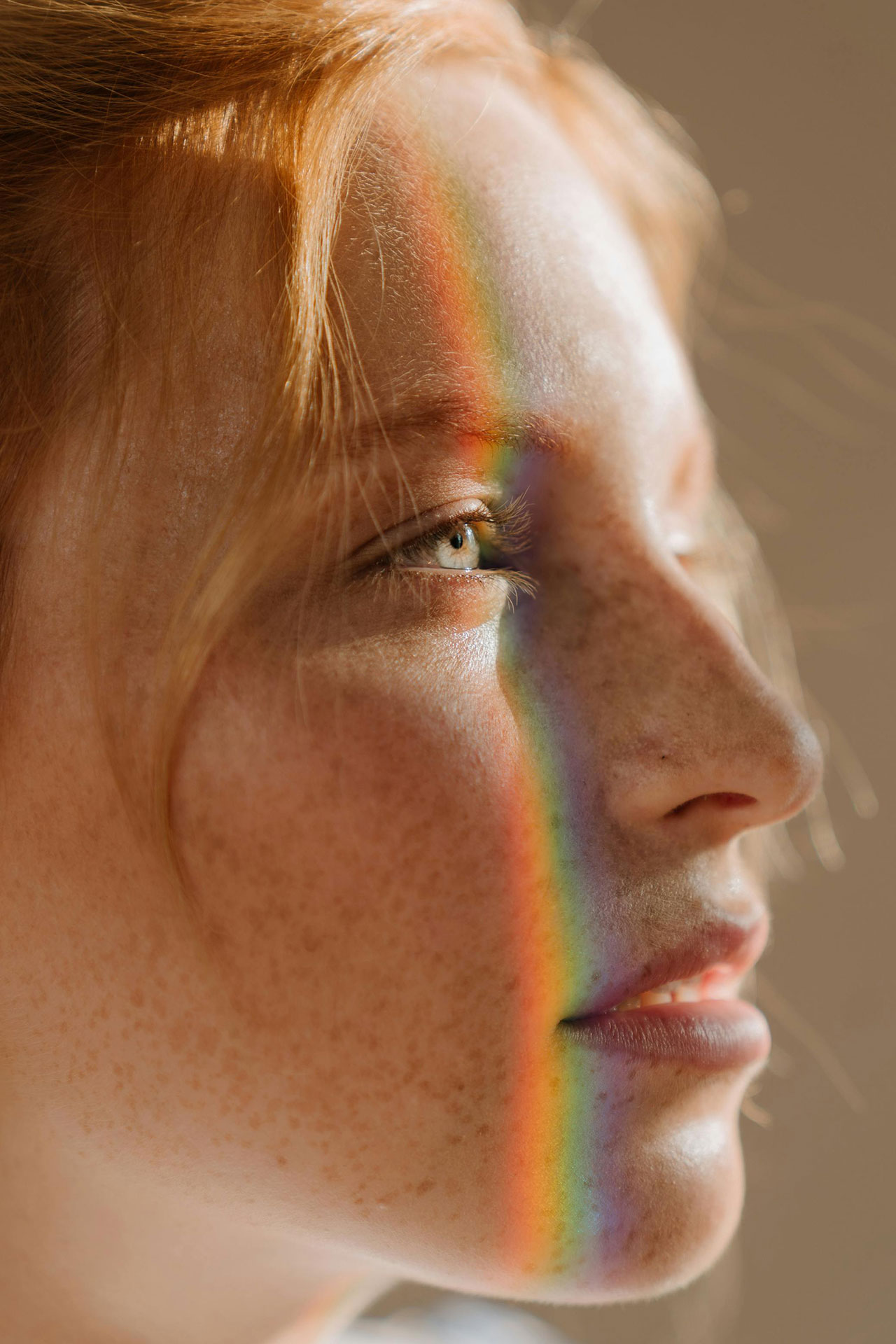
Understanding (and embracing) hyperpigmentation
As a skincare professional with bags of experience under my belt, I have seen firsthand how much the skincare industry can help – and hinder – people’s self-esteem. And while there is nothing wrong with hankering after healthy, glowing skin, the pursuit of a flawless, blemish-free complexion is far more problematic.
Hyperpigmentation is something that affects all sorts of people, from all walks of life. It is normal, it is natural, and it is absolutely nothing to be ashamed of. But with products and treatments flooding the market, promising to banish pigmentation for good, it is time we took a closer look at the truth about this common skin condition.
What is hyperpigmentation?
Hyperpigmentation is an incredibly common skin condition characterised by darker patches of skin. It occurs when excess melanin (the pigment that gives skin its colour), is produced. This short video from dermatologist Dr. Shevanti Jegasothy explains more.
But as well as understanding what hyperpigmentation is, it is important to tune into what the different types of hyperpigmentation are trying to tell you.
Chloasma (also known as melasma)
- Appearance: Brown or grey-brown patches.
- Common areas: Face and cheeks, forehead, bridge of the nose, above the upper lip.
- Causes: Hormonal changes (e.g. pregnancy, the contraceptive pill), sun exposure.
- Common in: Women, particularly during pregnancy (often called the “mask of pregnancy“). While this may fade for some women, everyone is unique, and it can persist post-pregnancy.
2. Post-Inflammatory Hyperpigmentation (PIH)
- Appearance: Dark spots or patches.
- Common areas: Any part of the body where inflammation has occurred.
- Causes: Skin injury or inflammation (e.g. acne, eczema, psoriasis, trauma), picking spots.
- Common in: All skin types, but more prevalent in darker skin tones.
3. Sunspots (Solar Lentigines)
- Appearance: Flat, brown spots.
- Common areas: Sun-exposed areas such as the face, hands, shoulders, and arms.
- Causes: Chronic sun exposure.
- Common in: Older adults and people with fair skin.
4. Vitiligo
- Appearance: Well-defined white patches on the skin.
- Common areas: Can appear anywhere on the body but are commonly found on the face, hands, and areas around openings like the mouth and eyes.
- Causes: Destruction or malfunction of melanocytes due to autoimmune processes, genetic factors, oxidative stress, or neural causes.
- Common in: People of all skin types and ages, but more noticeable in individuals with darker skin.
Each type of hyperpigmentation requires different approaches for treatment and prevention, including sun protection, topical treatments, and in some cases, professional procedures. But what if we worried less about getting rid of hyperpigmentation, and instead, focused more on embracing everything that makes us unique?
History of hyperpigmentation
Beauty standards differ all over the globe, which is why you should pay them no heed. Every country, event community and every person has their own ‘ideal’ when it comes to skin tone – and it is changing all the time.
- In western countries, light skin was historically associated with higher social status and beauty, as it implied a life spent indoors away from manual labour. However, there is now a growing appreciation for diverse skin tones and an undeniable leaning towards tanned skin.
- In India, fair skin has long been associated with beauty and higher social standing, reflected in the popularity of skin-lightening products. But today, a growing movement is challenging these beauty standards and promoting the acceptance of all skin tones.
- In East Asia (e.g., China, Japan, Korea), fair skin is traditionally associated with beauty and social status. This preference dates back to historical times when lighter skin indicated nobility. However, while skin-whitening products and practices are common, there is an increasing awareness and acceptance of natural skin tones.
- In Africa, diverse attitudes towards skin pigmentation exist, with varying standards of beauty. In some communities, lighter skin is sometimes favoured due to colonial influences and media portrayals, but there is a growing movement celebrating darker skin tones and challenging colourism.
Your self-acceptance (and self-worth) should not ever be dictated by someone else’s beauty standards. We all find different things beautiful and it is our uniqueness that often endears people the most.
How to embrace hyperpigmentation (safely)
We are all born without a single freckle, but as soon as we’re exposed to the sun, we experience pigmentation. This is a normal process – and one that serves to protect us.
When our skin is exposed to UV radiation from the sun, we produce melanin (leading to a darker pigmentation known as a tan) to help absorb and dissipate UV radiation. This reduces the risk of DNA damage that can lead to skin cancer. It’s an innate response to UV rays, and while we do have to be careful with sun exposure, the sun is extremely beneficial when enjoyed safely – and not something we should avoid because of hyperpigmentation.
Embracing natural skin variations has become increasingly popular as part of a broader movement towards self-acceptance and celebrating diversity in beauty – something I’m all for! So, let’s take a look at how people are embracing hyperpigmentation:
1. Freckle Pens and Makeup
- Face-Freckling: From freckle pens to freckle tattoos, a growing number of people are using tools to create faux freckles in celebration of a natural look that includes hyperpigmentation.
- Makeup Tutorials: Beauty influencers and makeup artists are sharing tutorials on their platforms, showing how to enhance natural freckles and pigmentation – instead of covering them up.
2. Skin Positivity Movement
- Social Media Campaigns: Hashtags like #SkinPositivity, #FrecklesAreBeautiful, and #LoveTheSkinYoureIn encourage sharing unedited photos that celebrate natural skin, including freckles, moles, and other forms of hyperpigmentation.
- Influencers and Celebrities: Figures like Adwoa Aboah, Winnie Harlow, and many beauty influencers openly embrace their natural skin, including conditions like vitiligo and melasma, to promote acceptance and self-love.
3. Art and Fashion
- Photography and Art: Artists and photographers like Brock Elbank and Peter DeVito create works that celebrate skin diversity, including freckles and other forms of hyperpigmentation.
- Fashion Industry: Runways and fashion editorials increasingly feature models with visible hyperpigmentation, showcasing a broader spectrum of beauty.
These examples reflect a growing trend for celebrating and normalising all skin types and conditions. But while it’s wonderful that freckle pens and face-freckling tattoos are all the rage, your skin isn’t a trend – which means that learning to embrace your skin is the most important thing of all.
Healthy, glowing skin
I am all about helping people to achieve healthierskin. I do not believe in perfection and I do not play on people’s insecurities. There are certain products and treatments that will help to manage hyperpigmentation if it is something that makes you uncomfortable. Bear in mind that even as we ‘treat’ hyperpigmentation, the process starts again once you step into the sun.
My advice is to love the skin you are in. Explore healthy ways to heal your skin (from the inside-out). Enjoy the sun safely – without overdoing it, remembering even dark skin can burn. While we embrace hyperpigmentation in all its glory, never ignore your skin when it’s trying to tell you something.
If you are not sure what your skin is trying to tell you book a consultation and let us find out together.








